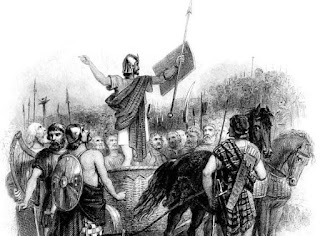Scotland's Ancient Woodlands
Scotland's Ancient Woodlands
The scale of Scotland's great Medieval forest is hinted at by the Victorian writer J.E Harting in his British extinct Animals. “We can scarcely overestimate the wildness that everywhere prevailed,” he wrote,
"In the south, a vast forest filled the intervening space between Chillingham and Hamilton, a distance, as the crow flies of about 80 miles, including within it Ettrick and numerous other forests, and further north the great Caledonian wood, known even at Rome, covered the greater part of both the Lowlands and the Highlands, its recesses affording shelter to bears, wolves, wild boars, and wild white cattle."
In Medieval times, people travelled inland fearfully. The forests were nature's place, the habitat of the forces of darkness, treacherous to the superstitious. Harting achieved a knee-knocking portrait of a wolf-infested wilderness.
"The time of James V... a great part of Ross, Inverness, almost the whole of Cromarty, and large tracts of Perth and Argyleshire, were covered with forests of pine, birch, and oak, the remains of which continued to our time in Braemar, Invercauld, Rothiemurchus, Arisaig, the banks of Loch Ness, Glen Strathfarrar, and Glen Garrie.
"And it is known that the braes of Moray, Nairn, and Glen Urcha, the moors of Rannach, and the hills of Ardgour, were covered in the same manner. All these clouds of forests were more or less frequented by Wolves.
"All the country from the Lochie to Loch Eroch was covered by a continuous pine forest, the eastern tracts upon the Blackwater and the wilderness stretching towards Rannach were so dense and infested by the rabid droves, that they were almost impassable."
Never mind that hysterical Victorian assessment of the wolf population as rabid droves, but understand their presence made a menace out of the forest. Bear in mind, too, that some of those 'clouds of forests' crept to the very edges of the biggest towns and cities, including Edinburgh.
David I was riding in Drumsheugh Forest barely a canonball's flight from the Castle when he came off second best in an encounter with a stag.
In the beginning, plants with air-borne spores such as lichens and moss would have been the first Scottish plant colonisers. The first woody plants were probably willows and birches with their handy, easily-dispersed seeds. Alder and aspen would have colonised rivers and loch banks.
From this early start, as the last snows of the Ice Age melted, the Great Caledonian Forest that once covered large tracts of Scotland developed.
It was nature's spectacular canvas, a dark mothering weave, as feared as it was handsome, of pine, birch, juniper, oak, hazel, willow, alder, ash, Rowan, beech, aspen, holly and much else.
The last thousand years have been an era of continuous decline for the native forest. Settlement required some forest clearance, and the introduction of feudal elements from Europe began to change the pattern of land use forever.
The growth of agriculture and the creation of burghs took an unprecedented toll on the forest. In the 16th century, a campaign against the wolf accounted for barely credible devastation.
New roads into the Highlands were inevitable after Culloden, and later great tracts of forest were felled to make charcoal for iron smelting, Railways versed the land, more trees were needed, and much of Rothiemurchus was levelled in the 1860s for railway sleepers.
The Highland Clearances introduced sheep and deer, which stopped natural regeneration. The timber demands of wars are a further reason why Scotland is almost bankrupt of native trees.
Today's Scotland of bare mountains, browsed-to-the-bone Border hills, and fake forests of sitka spruce is a landscape lie. But you can still get a sense of that ancient woody regime in Rothiemurchus, Abernethy, Glen Affric and the Black Wood of Rannoch, or in the oak woods of Loch Lomondside and Ardnamurchan
At Craig Fiaclach on the edge of Rothiemurchus, you can see something like the original treeline. There, the Scots pines clamber up the face of a corrie headwall, until, at 2,200 feet, they flatten under the wind thrashing down from the Cairngorms plateau.
A pine tree 4 ft high, 4 ft wide, and 200 years old is a thing to marvel over.
Rothiemurchus means the Broad Plain of the Firs, and from the Gleann Einich track looking towards the Lairig Ghru, you can see why.
In its dark green depths are aged trunks which signposted the flight of Jacobites from Culloden, which knew the howl of wolves and reach back to the last Ice Age in only 30 generations.
One indicator of the nature of the task of restoring Scotland's forests is the Woodland Trust's planned rehabilitation of Glen Finglas in the Trossachs. To reinstate something like the natural order to this small glen will take 3 million trees. Yet 3 million adds up to only a small cloud of trees.
The greater task is to plant whole skyscapes.














Comments
Post a Comment